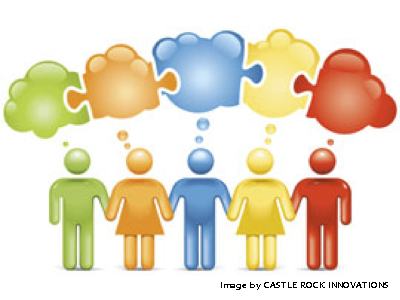Collaborate and don't die trying
Posted on 11 April 2016
Collaborate and don't die trying
 By David Perez-Suarez, University College London, Phil Bradbury, University of Manchester, Aleksandra Nenadic, University of Manchester, Laurent Gatto, Cambridge University, and Niall Beard, University of Manchester.
By David Perez-Suarez, University College London, Phil Bradbury, University of Manchester, Aleksandra Nenadic, University of Manchester, Laurent Gatto, Cambridge University, and Niall Beard, University of Manchester.
A speed blog from the Collaborations Workshop 2016 (CW16).
Remote collaboration: challenges in Human-Computer-Human interactions.
Tools that were mentioned during the discussion: GitHub, BitBucket, GitHub issue tracker, Skype, Google Hangouts (but max participants in Skype/Google Hangouts), Google Docs, spreadsheets, Jira, todo lists, time sheets, DropBox, … but are tools really the problem?
Use cases: coding, remote teaching, writing papers, large open-source development.
We started our discussion with a list of tools and use cases from our own experience: GitHub, BitBucket, GitHub issue tracker, Skype, Google Hangouts (but max participants in Skype/Google Hangouts), Google Docs, spreadsheets, Jira, todo lists, time sheets, DropBox, … for situations like coding, remote teaching, writing papers, large open-source development. Despite the availability of these tools, some being really good, we were left to wonder whether the tools were really the problem, here?
How is the Team structured? Is it all remote, or mostly local with a few remote collaborators. Are all participants using the same workflows and tools? It is often easier to remote-collaborate with people we have already met in real life, especially when sharing work practice/tools, when there is a "natural fit" for a collaboration. How can we help people fit in?
What are the guidelines to collaborate? Will tools solve the problems we face on person-person interactions or there are new problems to solve?
We have made a small survey among us what problems different people face when collaborating with other people. Sometimes the tools they have to use are driven by the preference of one of the collaborators and not by the needs of the project or the most efficient. In other situations the collaborators have been using the same tools before and the project progress seamlessly without interruptions or discussion about the software needed. In general, the problem found in the different cases discussed here were similar to the ones happening in human-human interaction where management of work by a leader is either nonexistent or done badly. The online interactions amplify these general issues in communication/meetings:
- attention span,
- setting up (useless) meetings when an email/note/issue would fit the job,
- remote communication favours passivity, rather than more active involvement, etc.
Part of the solution:
- Projects need management, people in charge, guidelines/rules on how to remote-participate in a project,
- Assign tasks to people, follow up, and take meetings’ minutes,
- Better communication tools.
Better tools will only solve part of the issue, there's always room for improvement. For example, include emulating red/green sticky notes (partly available in Google Hangouts) or raising hands on teleconference software, timing contributions while working in tasks and issues (harvest+GitHub, Jira) or automatically adding (GitHub) issues from the discussion tool (eg, IRC or Slack integrations). However, many of these things may become useless if there's not a leader or champion in the collaborations, or if the data is not used then (like the time spend in different tasks) the value of the tools is lost.
Other points to have in mind:
- Sync vs. async communication: balancing video conferencing, chatting and reporting,
- Rather than technology, may be we need to understand how Human-Computer-Human interactions work.



